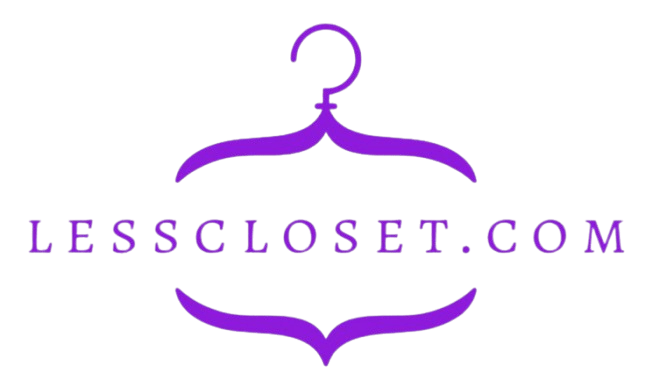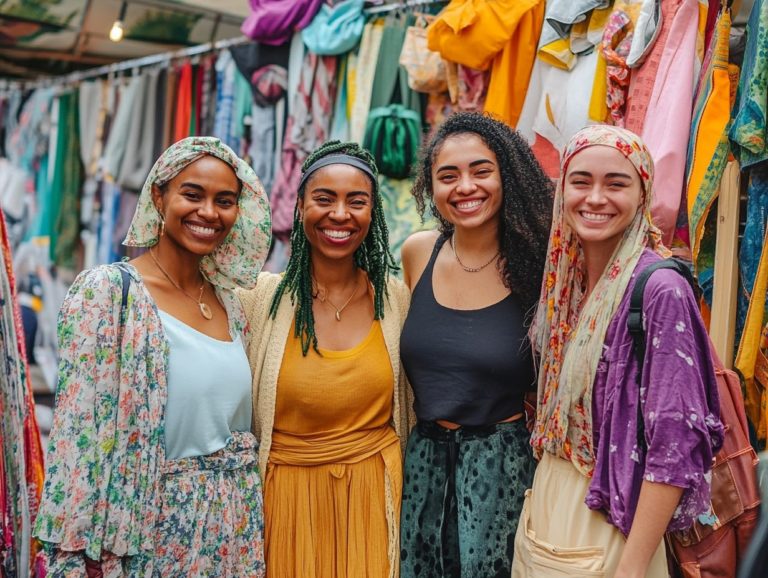How to Spot Greenwashing in Fashion Brands
In today s fashion landscape, sustainability is gaining significant traction. Many brands are eager to flaunt their eco-friendly practices.
However, not all claims withstand scrutiny. This is the tricky realm of greenwashing, where it can be challenging to discern genuine efforts from misleading marketing tactics.
This article offers insights into greenwashing within the fashion industry, highlighting common signs to be aware of and providing practical tips on how to support truly sustainable brands.
Explore this complex issue with us and empower your shopping decisions.
Contents
- Key Takeaways:
- Understanding Greenwashing in Fashion
- Common Tactics Used by Fashion Brands
- Signs of Greenwashing to Watch Out For
- How to Verify a Brand’s Sustainability Claims
- Tips for Supporting Truly Sustainable Fashion Brands
- Frequently Asked Questions
- 1. How do I spot greenwashing in fashion brands?
- 2. Are there any specific certifications or labels I should look for to identify truly sustainable fashion brands?
- 3. Can I rely on a fashion brand’s claims of using “organic” or “natural” materials as a sign of sustainability?
- 4. What are some red flags that may indicate a fashion brand is greenwashing?
- 5. Is it possible for a fashion brand to be completely sustainable?
- 6. How can I educate myself on greenwashing and make more informed fashion purchases?
Key Takeaways:
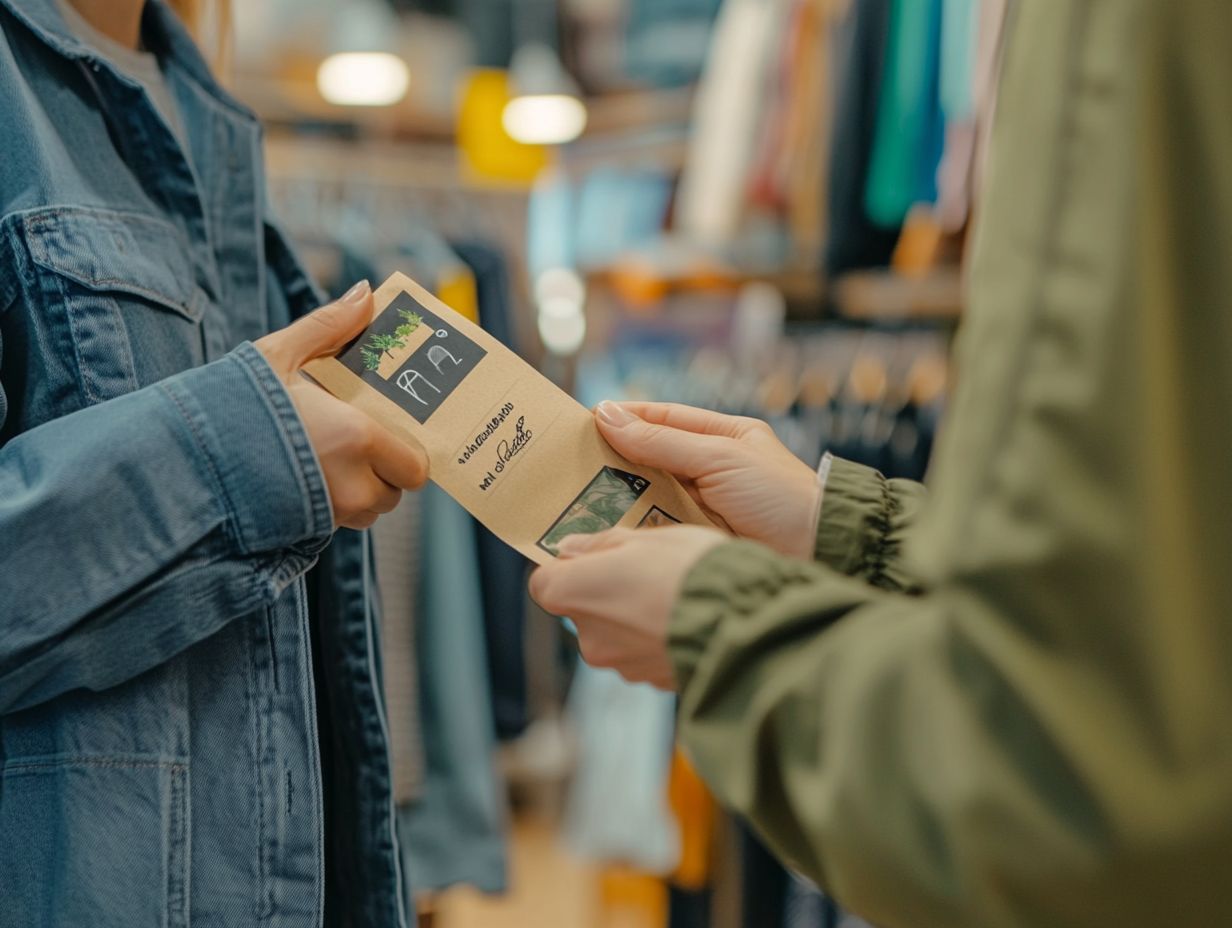
- Don’t be fooled by misleading marketing claims. Do your research and fact-check a brand’s sustainability claims.
- Look for third-party certifications to ensure a brand’s sustainability practices are legitimate.
- Support sustainable fashion by shopping second-hand and backing small, local businesses.
Understanding Greenwashing in Fashion
Understanding greenwashing in the fashion industry is crucial for you as a mindful shopper striving to make environmentally responsible choices. This phenomenon arises when brands portray themselves as more sustainable or eco-friendly than they are, often relying on misleading claims that obscure harmful practices like excessive carbon emissions and textile waste.
As greenwashing rises, it becomes increasingly difficult for you to distinguish brands that genuinely prioritize sustainability and social responsibility. This is especially true in a market overflowing with fast fashion and corporate jargon. By being aware of these tactics, you must demand transparency and hold brands accountable for their true environmental impact.
What is Greenwashing?
Greenwashing is a deceptive tactic some fashion brands use to mislead you into thinking their products are environmentally friendly or sustainable. They often make vague claims about eco-friendly ingredients or initiatives that lack real substance, pulling the wool over the eyes of consumers like you who are concerned about their environmental footprint.
Many brands play psychological games, appealing to your emotional guilt or sense of social responsibility to craft a shiny veneer of sustainability. For example, they might emphasize a tiny green aspect of a product that still relies heavily on unsustainable practices, leaving you puzzled about the true impact of your choices. Their marketing often showcases certifications or buzzwords that sound great but are devoid of real meaning.
The ramifications of this misleading strategy are serious. It goes beyond fooling consumers; it can undermine genuinely eco-friendly brands, erode your trust in sustainability claims, and perpetuate harmful environmental practices. This ultimately puts both your well-being and the health of our planet at risk.
Common Tactics Used by Fashion Brands
Fashion brands frequently utilize tactics to craft a facade of sustainability, even when their actual practices fall short of eco-friendly standards. You may encounter misleading claims about production processes, the use of eco-labels without proper certification, and vague assertions regarding waste reduction initiatives.
These brands often inflate their carbon offsetting efforts or emphasize their reliance on renewable energy, all while conveniently overlooking the detrimental environmental impact of their supply chains and the exploitation of garment workers.
Misleading Marketing Claims
Misleading marketing claims are among the most common tactics fashion brands use to mask their true environmental impact. Terms like ‘eco-friendly’ and ‘green’ are frequently thrown around without substantial evidence or standardized definitions, leaving eco-conscious consumers confused as they search for genuine sustainable options.
You ll often see phrases like ‘sustainable materials’ and ‘fair trade’ in advertisements, yet these can lack consistent regulation or oversight. For example, a product may be labeled as ‘made with organic cotton’, but it could contain only a minimal amount of that material, misleading you into thinking you re making a responsible choice.
The term ‘biodegradable’ can mislead you as well, often leading shoppers to believe that an entire garment will break down naturally over time. However, some components could stick around in landfills for years. This deceptive language highlights the necessity for increased vigilance and education. As a shopper, you need to arm yourself with knowledge to critically assess these claims and demand transparency from brands.
Greenwashing in Production and Supply Chain
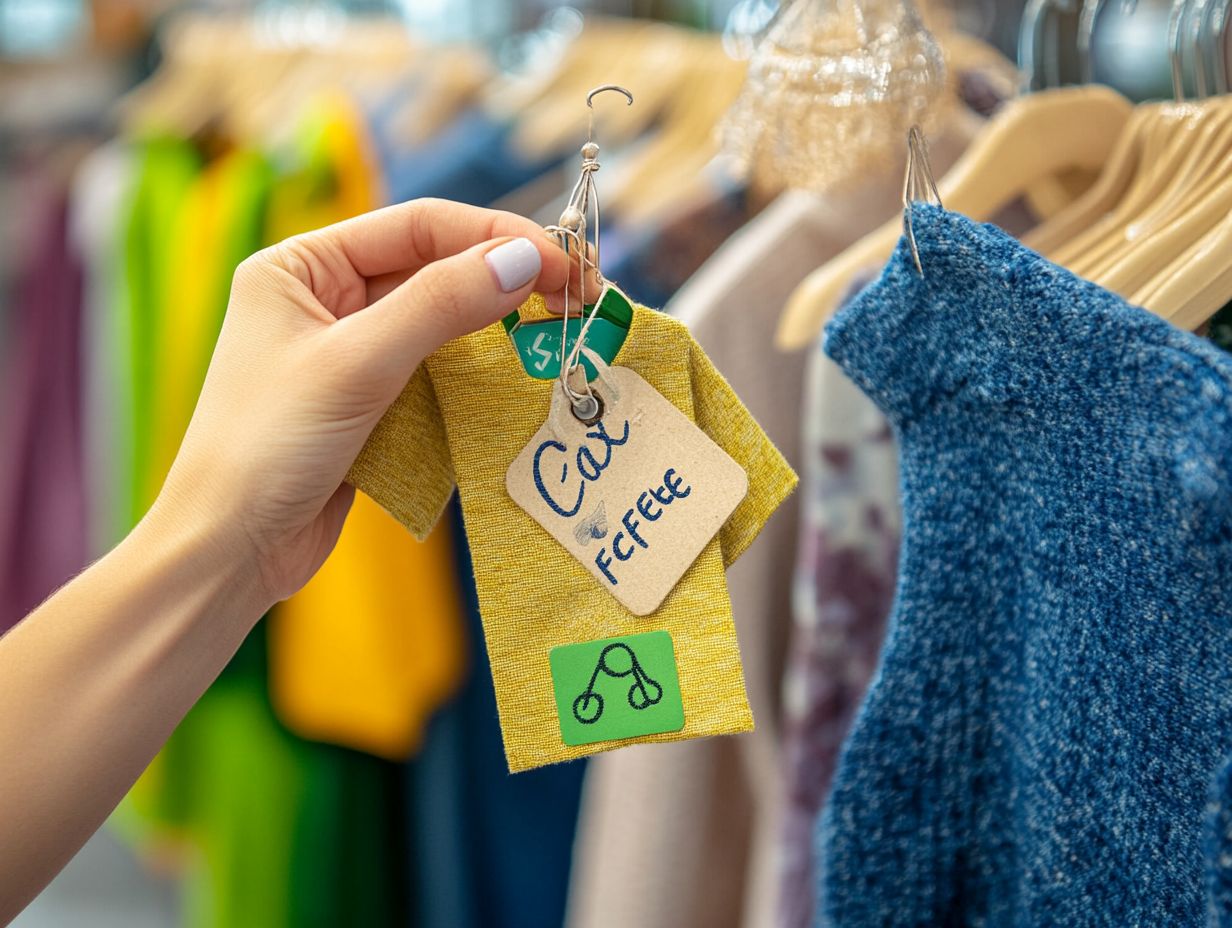
Greenwashing often seeps into the production and supply chain of the fashion industry. Brands may tout sustainable methods while their actual practices harm the environment. You might notice claims about eco-friendliness, but these often mask significant carbon emissions tied to fast fashion and the lack of effective waste management strategies in their production facilities.
While companies may highlight eco-friendly materials, a closer examination frequently uncovers ongoing reliance on processes that use a lot of energy and questionable labor conditions that undermine environmental integrity. For example, many brands boast about their recycling initiatives; however, the stark reality reveals high levels of textile waste stemming from overproduction.
Consider case studies that illustrate these discrepancies, such as a prominent brand that promotes an organic cotton line yet sources its fabrics from suppliers with dubious water usage practices. These contradictions demand your attention, urging you to evaluate not just what is presented in marketing, but what genuinely occurs behind the scenes.
Signs of Greenwashing to Watch Out For
You must identify the signs of greenwashing as a consumer striving to make ethical purchasing decisions in the fashion industry. Brands often flaunt misleading claims about sustainability and use buzzwords without any genuine substance. Be sure to look for indicators of unethical production practices, such as low wages for garment workers and a lack of transparency in the supply chain these can signal that a brand may be engaging in greenwashing.
Examples of False or Misleading Claims
Examples of false or misleading claims are all too common in the fashion industry. Many brands tout themselves as ethical or sustainable without offering solid evidence. You ll often come across vague slogans or certifications that lead you to believe a brand is committed to sustainability when, in reality, it may not be.
Consider a popular activewear brand that proudly displays eco-friendly labels on its clothing, implying that all its materials are sustainably sourced. Investigations, however, have shown that only a small fraction of their products actually meets stringent environmental standards, leaving you misinformed about your purchasing decisions.
In a similar vein, a high-end fashion label has faced scrutiny for claiming to use ‘cruelty-free’ materials while still sourcing from suppliers that fail to uphold humane treatment practices. Such misleading claims can erode your trust as a consumer, fostering skepticism about the authenticity of ethical marketing.
This ultimately tarnishes the brand s reputation in a market that increasingly values transparency and accountability. Stay informed and make smarter choices!
Indicators of Unethical Production Practices
Indicators of unethical production practices can often hint at whether a brand is merely greenwashing. Look out for signs like low wages for garment workers, a lack of adherence to environmental standards, and an apparent disregard for social justice issues. These elements often lurk beneath the glossy surface of a brand’s marketing narrative.
Many consumers might not recognize the telltale signs of exploitative labor practices. These include excessively long working hours in unsafe conditions or the absence of union representation. These factors are essential for evaluating the integrity of a brand’s production process.
The seductive allure of sustainability claims can easily divert attention from the harsh realities of unfair trade practices. Companies may tout eco-friendly materials while conveniently sidestepping the labor conditions faced by those who produce them.
By prioritizing living wages and fair treatment for workers, brands can genuinely embrace ethical practices that promote both environmental sustainability and social responsibility.
How to Verify a Brand’s Sustainability Claims
Verifying a brand’s sustainability claims is crucial in the ongoing battle against greenwashing in the fashion industry. Take action now to support sustainable practices! Conduct thorough research, fact-check those claims, and look for third-party certifications that affirm a brand s dedication to ethical production practices and environmental responsibility.
Your diligence not only protects your values but also supports genuine efforts toward sustainability in fashion.
Researching and Fact-Checking
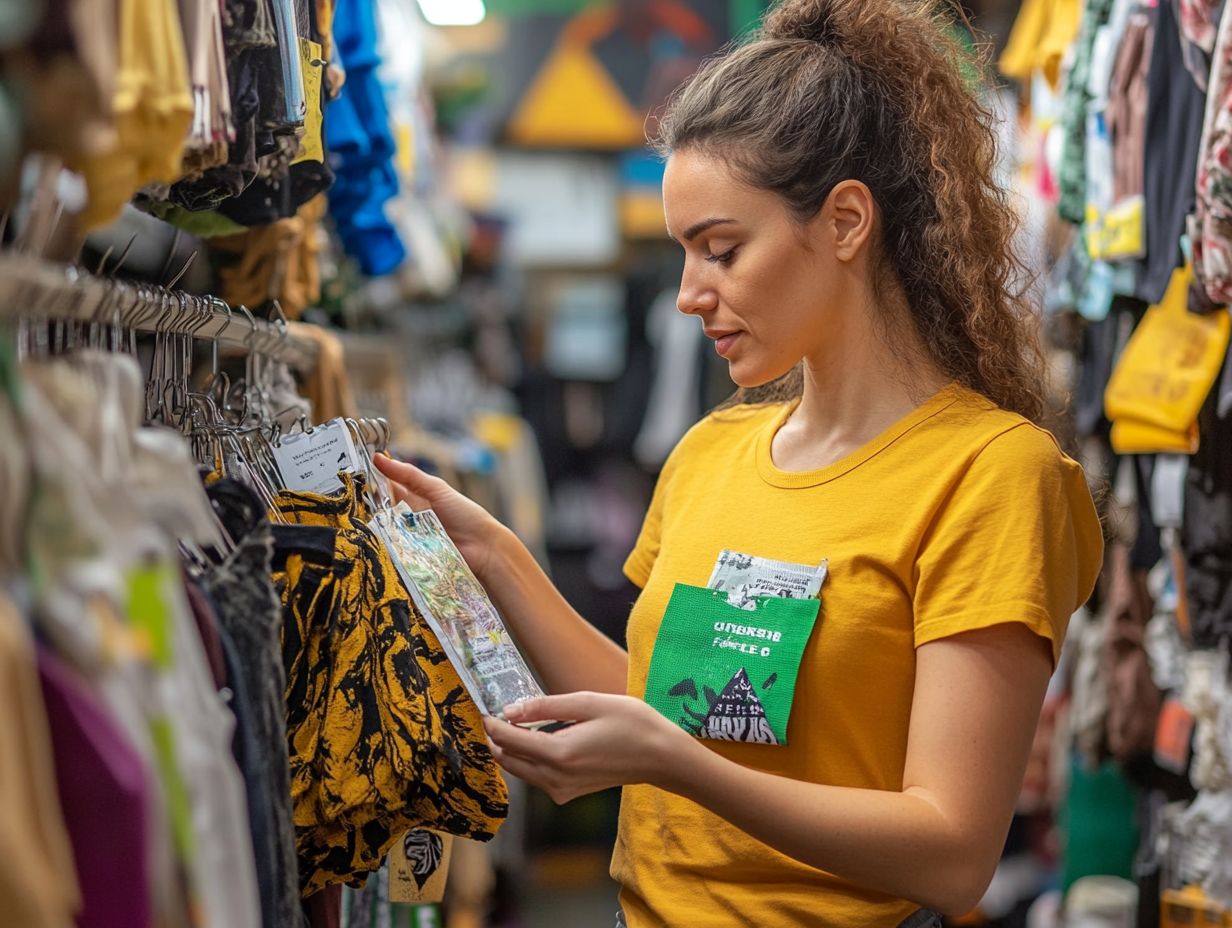
Researching and fact-checking are essential tools for you as a consumer. These enable you to distinguish genuine sustainability claims from the misleading ones. This process requires diving into a brand’s history, production practices, and environmental impact to ensure that their assertions align with reality.
Dive into the intricate landscape of corporate practices and discover what’s really going on! By tapping into online databases and ethical consumer guides, you can navigate these waters with greater confidence. These resources grant you access to vital information on various brands, helping you identify those that genuinely prioritize ethical standards and true sustainability.
Reading consumer reviews offers you firsthand accounts of a company’s practices, shedding light on transparency and accountability. Employing these strategies not only enables you to make informed decisions, but also cultivates a marketplace where ethical practices are acknowledged and rewarded, encouraging brands to uphold high standards.
Looking for Third-Party Certifications
Exploring third-party certifications can greatly enhance your ability to verify the sustainability claims made by fashion brands. Certifications like Fair Trade or GOTS (Global Organic Textile Standard) provide you with reliable assurance that a brand is genuinely dedicated to ethical practices and environmental standards, helping combat environmental exploitation.
These certifications provide a transparent view of the production processes. They guarantee that workers are treated fairly and compensated with a living wage while minimizing the ecological impact. Labels such as USDA Organic or OEKO-TEX Standard 100 deserve your attention as well. They indicate that the materials used are free from harmful dyes, contributing to a healthier planet.
By opting for certified brands, you not only make informed decisions but also actively support a marketplace that prioritizes sustainability and ethical practices. When you choose certified options, you align your purchasing decisions with your values, fostering a more responsible and conscientious fashion industry.
Tips for Supporting Truly Sustainable Fashion Brands
Supporting truly sustainable fashion brands means making informed choices that prioritize environmental sustainability, ethical practices, and waste reduction. Focus on carbon offsetting strategies, which are efforts to compensate for carbon emissions made during manufacturing.
You have the power to significantly impact the fashion industry. Choose second-hand shopping, champion small and local businesses, and be mindful of your consumption habits to reduce carbon emissions. Each thoughtful decision you make contributes to a more sustainable future in fashion.
Shopping Second-Hand
Shopping second-hand lets you embrace sustainable fashion while cutting down your environmental impact. By giving pre-loved clothing a new life, you play an important part in fighting textile waste.
Second-hand shopping also offers unique finds that stand out from cookie-cutter styles in fast fashion. Thrift stores, consignment shops, and online platforms are treasure troves of vintage pieces, often at a fraction of their original price.
To weave these gems into your wardrobe, think about creating a small collection of key pieces. This approach sparks creativity and reinforces your commitment to a more eco-friendly lifestyle all without sacrificing style.
Supporting Small and Local Businesses
Supporting small and local businesses promotes sustainable fashion. It s a powerful way to help your community grow and embrace ethical living.
When you shop from local artisans and small-scale brands, your purchases help boost the local economy. Plus, you often leave a lighter environmental footprint, reducing pollution.
These businesses focus on fair labor conditions and eco-friendly materials. This is a stark contrast to the exploitative nature of fast fashion giants.
Choosing locally-made items cuts the carbon footprint related to shipping. You also support a culture where creativity and craftsmanship thrive!
Frequently Asked Questions
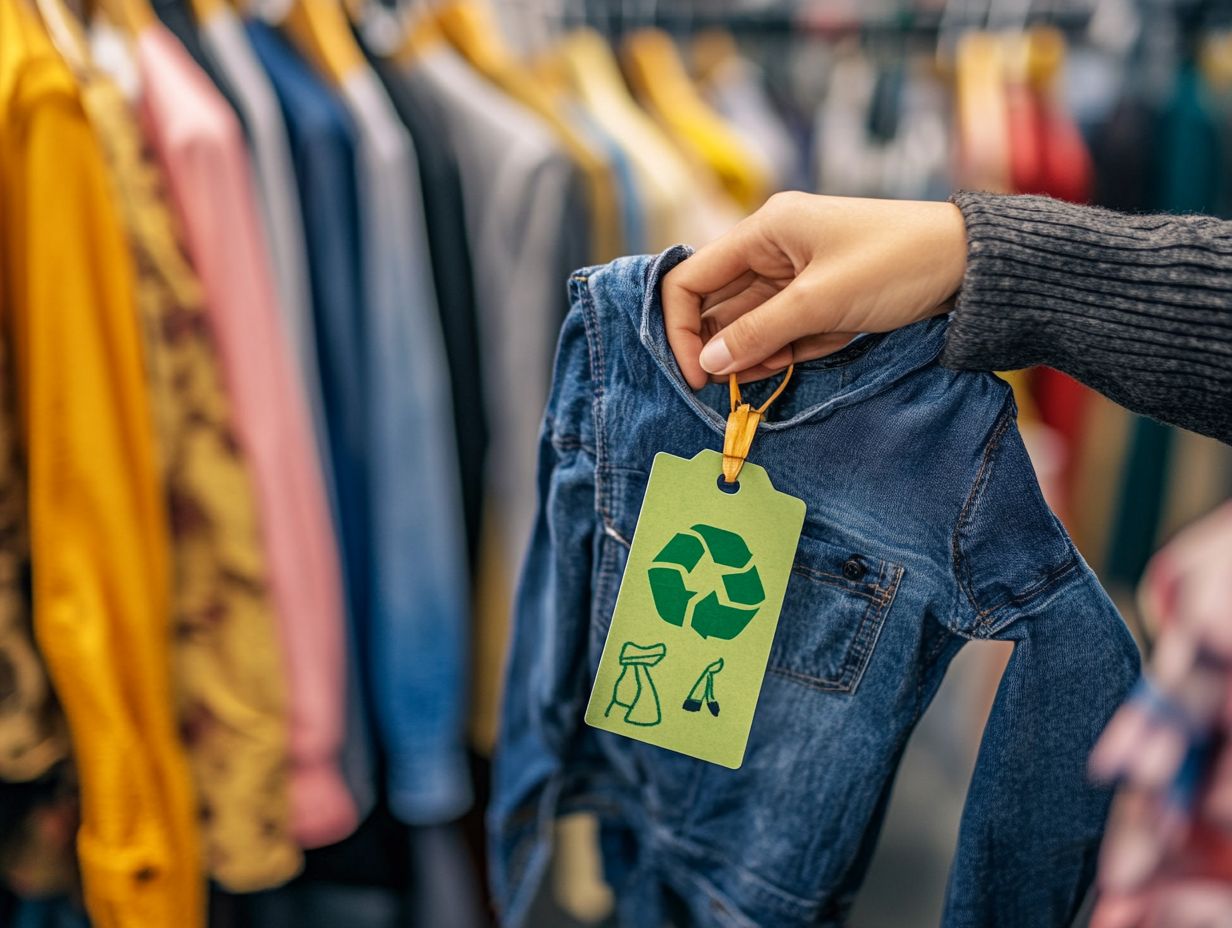
1. How do I spot greenwashing in fashion brands?
One way to spot greenwashing in fashion brands is to look for vague or misleading language in their marketing materials. This could include buzzwords like “eco-friendly” or “sustainable” without specific details about their practices.
2. Are there any specific certifications or labels I should look for to identify truly sustainable fashion brands?
Yes, several certifications and labels can help you identify truly sustainable fashion brands. Examples include Fair Trade Certified, Global Organic Textile Standard (GOTS), and Bluesign.
3. Can I rely on a fashion brand’s claims of using “organic” or “natural” materials as a sign of sustainability?
Not necessarily. While using organic or natural materials can be part of sustainable practices, it’s important to also consider the brand’s overall production processes and their impact on the environment.
4. What are some red flags that may indicate a fashion brand is greenwashing?
One red flag is when a brand makes bold claims about their sustainability efforts but provides little to no evidence or transparency about their practices. Another is if a brand’s marketing focuses more on their “green” image rather than their actual products.
5. Is it possible for a fashion brand to be completely sustainable?
While it may be difficult for a brand to be 100% sustainable, some prioritize sustainable practices and continuously strive to improve their environmental impact. Look for brands that are transparent about their sustainability efforts and actively work to reduce their carbon footprint.
6. How can I educate myself on greenwashing and make more informed fashion purchases?
One way to educate yourself on greenwashing in fashion is to do your own research and stay updated on industry news. You can also look for resources or organizations that provide information and ratings on sustainable fashion brands. Always read the labels and fine print on clothing items instead of relying solely on the brand’s marketing claims.
